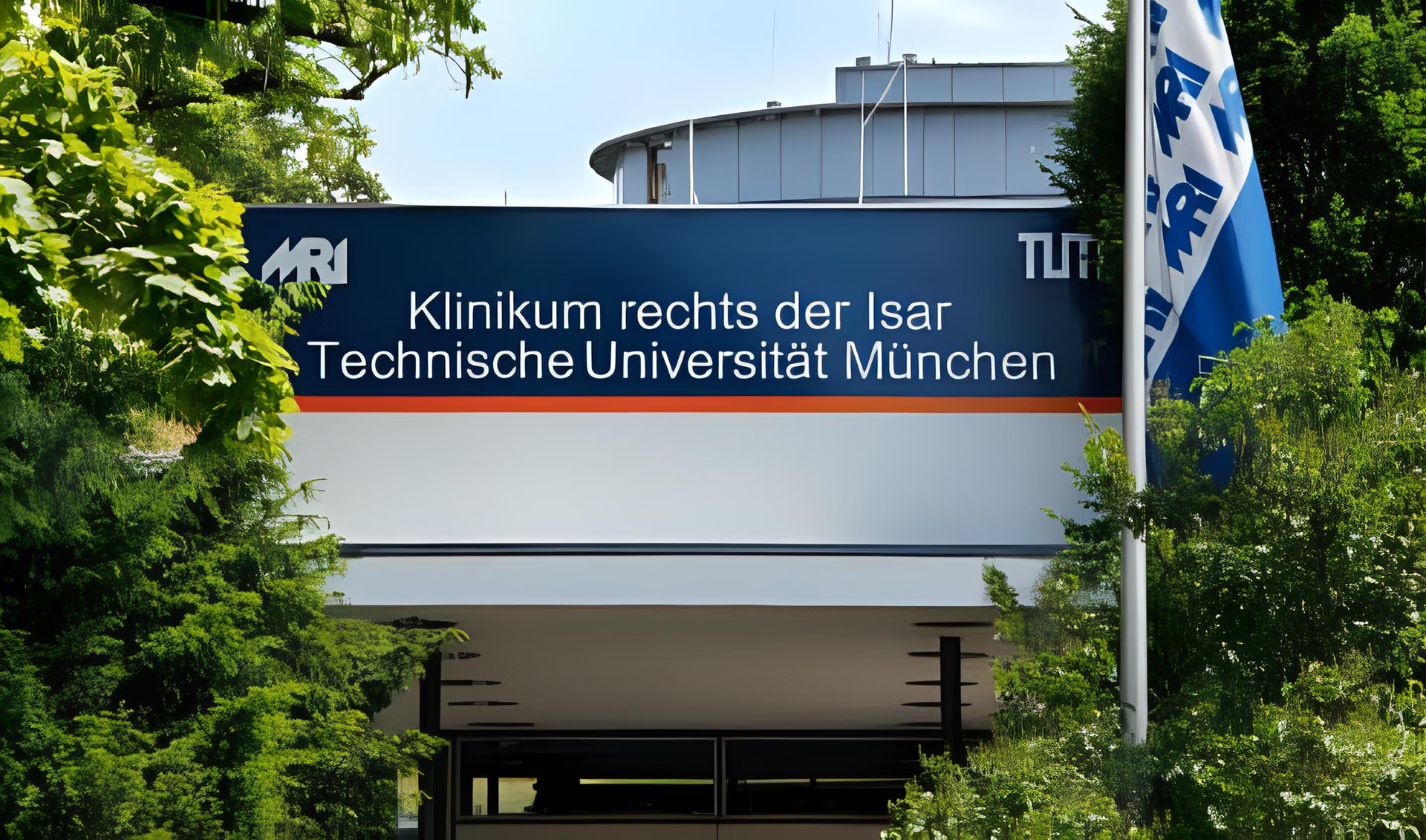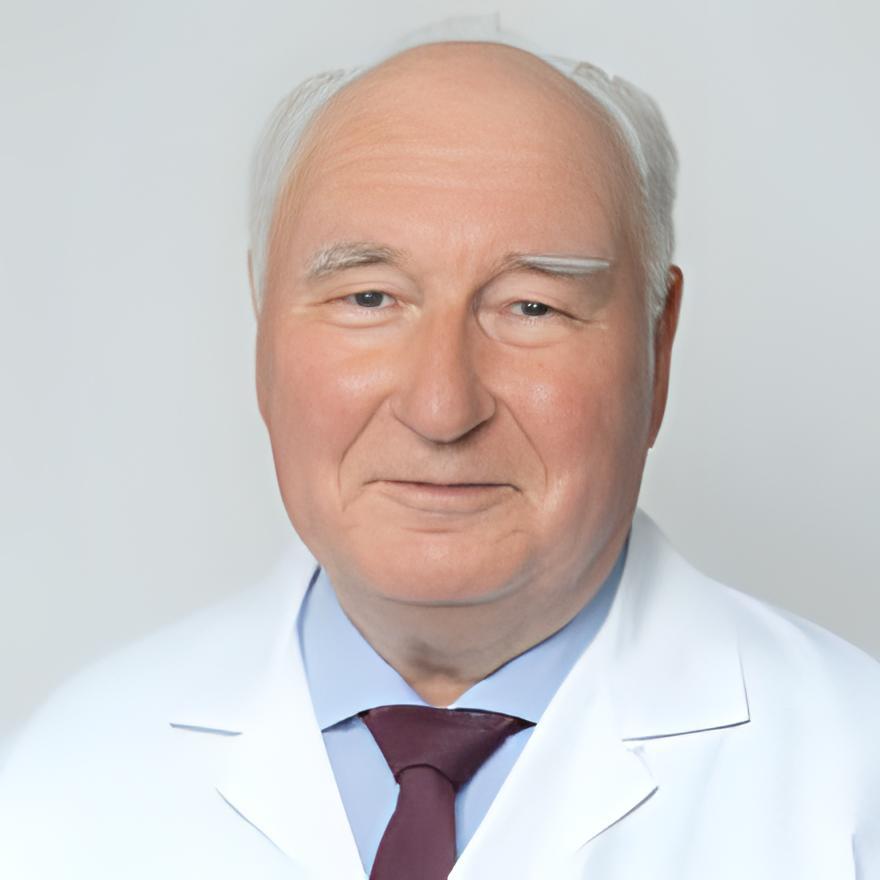High Intensity Focused Ultrasound (HIFU) for Prostate Cancer

95 to 100% of patients with low-risk prostate cancer treated with HIFU were alive after ten years.
The HIFU procedure for prostate cancer helps avoid radical prostate cancer treatment in 91% of patients.
The high-frequency ultrasound treatment’s metastasis-free survival rate was 95% for 15 years.
The rate of re-treatment with HIFU is 15% due to a 15-year study.
 What is HIFU treatment?
What is HIFU treatment?
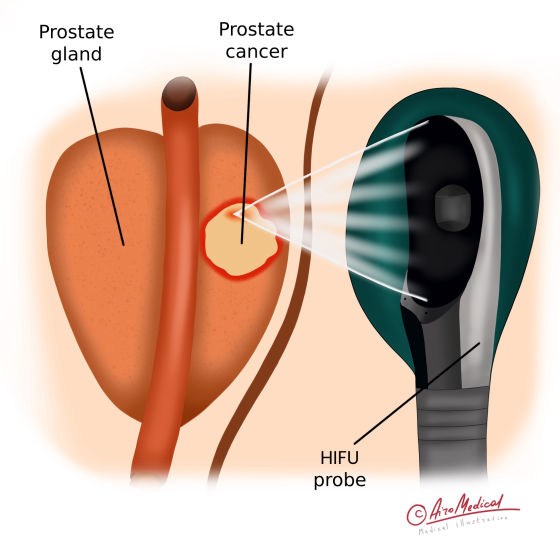 Prostate cancer is the second type of cancer in men worldwide and the fifth most common cause of death from cancer. In the United States, about 1 in 9 men will have prostate cancer at some point in their lives, according to estimates.
Prostate cancer is the second type of cancer in men worldwide and the fifth most common cause of death from cancer. In the United States, about 1 in 9 men will have prostate cancer at some point in their lives, according to estimates.
High-intensity focused ultrasound, or HIFU is a non-invasive medical treatment that uses high-frequency sound waves to eliminate abnormal tissues with minimal impact on healthy ones. The kind of ablation, HIFU for prostate cancer success rate is promising, and the usage of HIFU to treat prostate cancer will grow.
Most people think HIFU is a safe and effective treatment for early-stage prostate cancer. It is often used instead of surgery or radiation therapy because it has been shown to shrink the prostate and improve symptoms in men with prostate cancer.
The HIFU side effects are mild. This method treats a primary prostate tumor that has not spread beyond the prostate. HIFU is also used after other treatments or radiation therapy, which did not help.
 How does it work?
How does it work?
In explaining, what HIFU is for prostate cancer, it is essential to note that this method uses focused ultrasound waves to remove a piece of tissue at the focal point by heating it. When concentrating on a specific spot, high-power ultrasound can raise the temperature by 80 to 90°C. It can lead to heat cancer cells and destroy them. It is performed to treat prostate cancer, which affects the prostate gland, a small gland about the size of a walnut between a man's bladder and genitalia.
There are two kinds of HIFU surgery used for the prostate gland:
- Focal HIFU,
- Whole-gland HIFU.
What is the difference?
Focal HIFU may also be called focal treatments or HIFU partial ablation. It takes one to two hours and is used to treat cancer in the prostate. It might work for men with small cancers within just one or two spots on their prostate that need to be treated. The surgeon will treat the areas of cancer that need to be treated and a small area around them. In focal HIFU, fewer healthy cells are hurt than in whole-prostate HIFU.
Whole-prostate HIFU requires about three hours and treats the whole prostate. It is not as common as focal HIFU, but it might be a good option for men with prostate cancer that need to be treated in more than one place. Whole-prostate HIFU treatment side effects are more significant.
 A full explanation of how to treat prostate cancer
A full explanation of how to treat prostate cancer
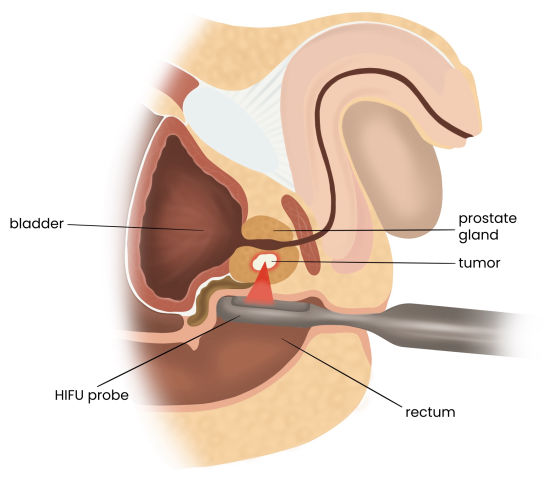 Have you ever used a magnifier glass to make a fire or burn a spot in a sheet by reflecting the sun's rays? If so, you will understand how to use HIFU. The ultrasound waves focus on the area of tissue that needs to be treated. They can move through tissue layers without changing until they reach the cancer lesion.
Have you ever used a magnifier glass to make a fire or burn a spot in a sheet by reflecting the sun's rays? If so, you will understand how to use HIFU. The ultrasound waves focus on the area of tissue that needs to be treated. They can move through tissue layers without changing until they reach the cancer lesion.
General anesthesia is used to do the HIFU procedure. First, a device is put into the patient's body through the rectum. This sensor is used to see the tumor and treat it simultaneously. Next, the waves warm the cells to 80-90 degrees Celsius, killing many cancer cells in a few seconds. Lastly, the ablation zone is made by doing several steps to cover an area that has already been studied and mapped out.
Oncologists have used high-intensity focused ultrasound to treat prostate cancer in Europe, the United States, and Japan since the 1990s. During this time, HIFU has shown that it is safe and effective by accurately destroying local tissue. The US Food and Drug Administration 2015 approved HIFU as a treatment method to ablate (kill) cancer cells. HIFU research on prostate cancer in 2022 is continued and widely performed.
 About the candidates or for whom HIFU can be helpful?
About the candidates or for whom HIFU can be helpful?
HIFU is an option for some men with prostate cancer, particularly those with early-stage, low-grade tumors or not candidates for other treatments, such as surgery or radiation therapy. It may be an option for men who want a minimally invasive treatment that does not involve incisions or hospitalization.
However, HIFU is not suitable for all men with prostate cancer. It is typically not recommended for men with more advanced or aggressive tumors, as the treatment may not be effective in these cases. It is also not suitable for patients with previous radiation therapy. Radiation damages the prostate tissue, so such patients may not be good candidates for HIFU treatment.
Where is HIFU treatment available?
 Pros and cons of HIFU for prostate cancer treatment
Pros and cons of HIFU for prostate cancer treatment
The advantages are:
- Non-invasive: HIFU is a non-invasive procedure that does not require an incision or surgery. HIFU can be an attractive and promising option for men who are hesitant or unsuitable for surgery due to other health issues.
- Less harm to healthy tissue. The treatment can be aimed directly at cancer cells while leaving healthy cells untouched. It decreases the hurting of surrounding cells (and, as some people said, “urethral sound side effects”) and improves recovery.
- Fewer side effects: HIFU has been shown to have fewer side effects than other prostate cancer treatments, such as surgery or internal radiation therapy. The most common side effects of HIFU for prostate cancer treatment are urinary incontinence and decreased potency. Still, these are usually temporary and resolve over time.
- Quick recovery: HIFU is typically an outpatient procedure so patients can return home the same day after the “prostate sounding.” Recovery time is generally shorter than surgery, and patients can return to normal activities within a few days.
- Combination with other treatments: HIFU can work with different therapy approaches (chemo, Lutetium PSMA therapy, targeted therapy). Also, the HIFU procedure can be done more than once and used after it has already been treated earlier.
Cons of HIFU for prostate cancer treatment:
- Limited availability: HIFU is not widely available and is only offered at a few centers worldwide. It can make it difficult for some patients to access this treatment option. We at AiroMedical can help.
- Limited data on long-term effectiveness: HIFU is a relatively new treatment option, and there needs to be more data on its long-term effectiveness. However, several studies have ten and even 15-year success histories of HIFU usage.
- Risk of complications: While high-intensity-focused ultrasound side effects are mild and the method has a low risk of adverse effects, it is not with to the rectum, bladder, or urethra during the procedure that can lead to complications such as bleeding or urinary incontinence. However, the risk of erectile dysfunction after HIFU is only 37% compared with radical prostatectomy (risk of ED is 82%)
What can HIFU doctors help?
 Results and statistics
Results and statistics
Studies conducted over fifteen years in German and French medical facilities have concluded that treating prostate cancers with high-intensity targeted ultrasound is best. Depending on their prognosis for cancer, 92% to 99% of patients who receive HIFU treatment live to be ten years. According to the study, HIFU and radiotherapy merged treatment had a four-year survival charge of 99% and 91%, respectively.
Also, a study by the French Urological Association was published in the French journal European Urology. It showed that after HIFU treatment, urinary continence is kept in more than 97% of patients, clinical cancer is not found in 95% of patients, and erectile function is saved in more than 87% of treated patients.
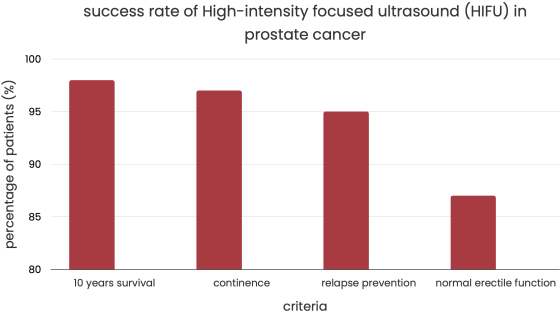
HIFU for prostate cancer treatment in 2022 will undoubtedly remain one of the leading technologies in focal therapy.
HIFU works well for treating prostate cancer in its early stages. It is often used instead of surgery or radiation therapy. In general, HIFU for prostate cancer has a high success rate. For many patients, this means that their cancer symptoms improve and their quality of life improves.
It is important to remember that the result of HIFU treatment for prostate cancer can vary depending on several factors. These include the stage and grade of cancer, the size of the prostate gland, and the patient's overall health. So, it’s essential to see the whole picture for the best results.
 How to choose the HIFU clinic?
How to choose the HIFU clinic?
When looking for the best clinics for HIFU therapy, you should pay attention to the following:
- Specialist's level is high, including their experience, scientific work, internships, and membership in international professional organizations.
- The clinic's rating is based on how well it follows international treatment protocols and how many operations are successful.
- Technical equipment is well-organized, like its own laboratory, diagnostic department, latest automatic equipment, and modern materials.
Choosing a specialized clinic from a few of the best hospitals and looking for the best HIFU for prostate cancer treatment costs are essential. With all these, we can assist.
With the help of AiroMedical, you can sign up for the program. Our experts will help you decide which clinic is best.
Working with us, you will get the following:
- Treatment at the best clinic specializing in prostate cancer therapy with HIFU.
- Less time waiting for treatment to start and the ability to pick suitable dates.
- Help with buying and getting medicines to people.
- Putting together more diagnostic and treatment procedures.
- Talk to the staff and people in charge at the clinic.
- Help in the entire process, from medical care to riding from the airport.
Also, we provide follow-up care after the end of the treatment.
We choose which doctors and clinics to work with based on annual qualification reports. The most important thing to searching for a doctor is how successful operations or procedures they have done. Their quality certificates and specialization are essential.
Put your request on our website. Our medical consultant will answer the questions you have about HIFU therapy.
Where to go to get HIFU treatment?
References:
- Journal of Endourology: High-Intensity Focused Ultrasound for the Treatment of Prostate Cancer
- National Library of Medicine: Prostate cancer treatment by the latest focal HIFU device with MRI/TRUS-fusion control biopsies
- National Library of Medicine: Evolution and outcomes of 3 MHz high intensity focused ultrasound therapy for localized prostate cancer during 15 years
- National Library of Medicine: Whole-gland ablation of localized prostate cancer with high-intensity focused ultrasound: oncologic outcomes and morbidity in 1002 patients
- UCLA Health: High-Intensity Focused Ultrasound (HIFU) Treatment for Prostate Cancer
- Urology Times: Why favor high-intensity focused ultrasound for treating localized prostate cancer?
